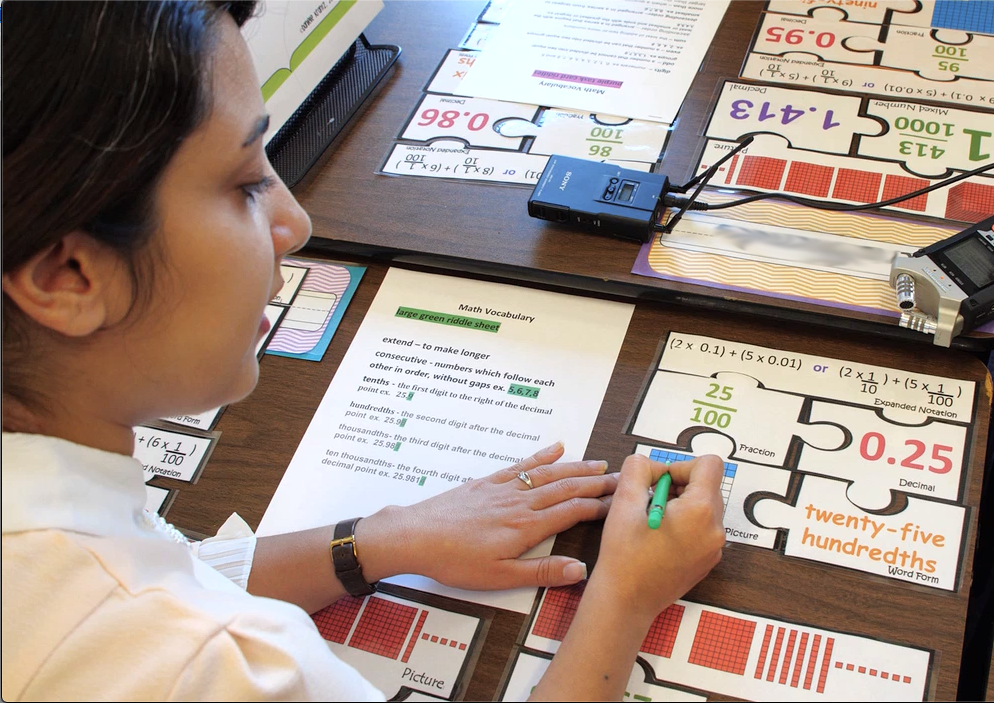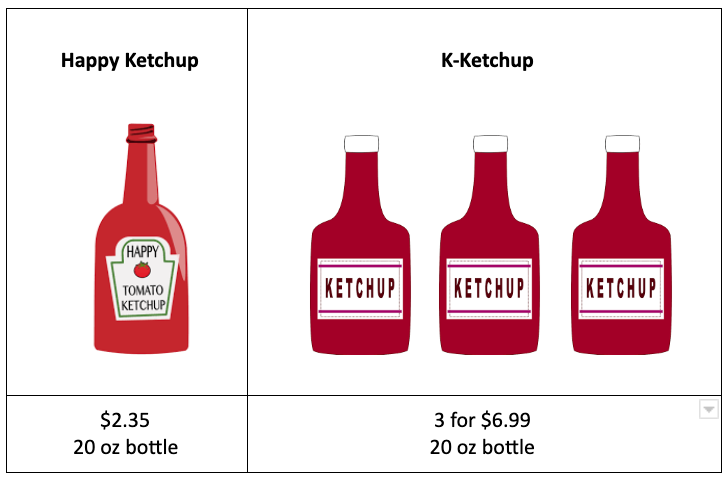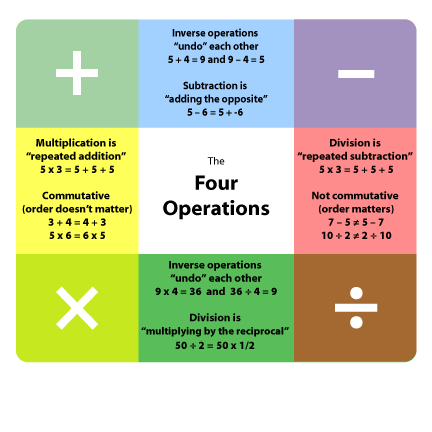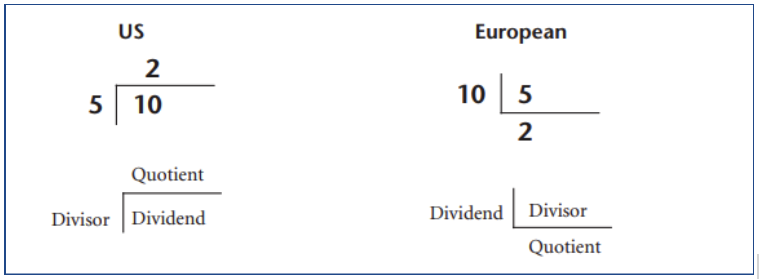Making Math Meaningful in the ESOL Classroom

This article also appears on the World Education blog here: https://edtech.worlded.org/making-math-meaningful-in-the-esol-classroom/
by Sherry Lehane
Math in ESOL Coursebooks
Did you ever start a home do-it-yourself project and suddenly realize you were in over your head? Maybe you didn’t have the carpentry skills or the right tools to do the project? This is how I felt many years ago when I attempted to teach math to my ESOL learners, many of whom had very little formal education. On the surface, it seemed easy enough. The ESOL coursebook I was using had math tasks embedded in the units such as totaling a bill, comparing prices, reading pay stubs, and creating a budget. I would model how to do the math, we would practice doing a few examples together, and then students would be able to complete the activity. There was one hiccup in this plan–the level of math thinking was superficial. There were many embedded math concepts that could be explored, but I did not yet have the tools to teach them. The tools I needed included a deeper understanding of the underlying skills and knowledge needed for problem-solving and strategies for teaching math to students with a range of math and language skills.
The Intersection of Language and Math
ESOL coursebooks include math activities because they are part of the life skills that we encounter daily, and it makes sense to include them in thematic units. We can help our English language learners navigate situations that involve math by integrating math into our ESOL instruction in a way that empowers them. In order to accomplish this, we need to dive deeper into math by creating opportunities for students to explore math concepts by using concrete objects and visuals, sharing their reasoning by discussing what they know and listening to the explanation of others, and ensuring they are able to transfer their knowledge to the real world. This is where language and math intersect! Integrating math in the ESOL classroom has the benefits of teaching learners math, language, and life skills all at once.
As a starting point, ESOL instructors can begin by thinking about the math they encounter daily or they can refer to the math activities in their ESOL coursebooks. Here is an example modeled from an ESOL coursebook where students are asked to compare prices of food items:

Typically, the accompanying tasks include reading labels and doing some computation such as:
Which is the better buy? or How much cheaper is…?
In this example, students could use addition (2.99 + 2.99), multiplication(2.99 x 2) or division (6.99 ÷ 2) to determine the better buy. One way to extend learning and explore valuable math concepts is to allow students to first do the math and then share how they solved this problem. By listening to others describe their approaches, students engage in a productive discussion, work on articulating what they know, and begin to think critically — in this case, about why different operations work to solve this problem. This can lead to an understanding of the relationships among the four operations as the visual below illustrates.

How would you explain the connection between division and subtraction? (Hint: Think about the connection between addition and subtraction as a starting point.)
Traditionally, we think of finding the ‘right’ way to solve a problem, but in life, there are usually many valid options for solving a problem. The College and Career Readiness Standards describe mathematical practices of numerate adults. One of these practices, MP1 Making Sense of Problems and Persevere in Solving Them, addresses the ability to solve problems and explain one’s reasoning (http://www.corestandards.org/Math/Practice/).
Let’s look at another opportunity to expand learning using the same ketchup problem. Students might use the same operations such as division, but the algorithm, or procedure, might differ. Algorithms for division, multiplication, addition, and subtraction can be done differently in other countries. (Even math notation such as decimals, commas, and colons can have different meanings in other countries!) Discovering why different algorithms work is another teachable moment and lends itself to rich conversations and a deeper understanding of math algorithms. Here is a comparison of the U.S. and European algorithms for division. (Note: The European algorithm is used in many countries in Europe, South America, and the Caribbean.)

Differentiating for Math Ability
One of the challenges in any math class is differentiating instruction for math ability. Here are some ideas on how the Ketchup problem can be adapted for different math levels.
More Accessible
To make the task more accessible, change the numbers to whole numbers such as $2.00 and $7.00.
More Challenging
For students who are ready for a more challenging task, you could add a step to this problem by adding a twenty-five cent discount coupon if you buy three or more bottles. Or you could modify the question by making Happy Ketchup a 22 oz. bottle. This would add ratios and proportional reasoning to the math task.
Keep the Focus on Language Acquisition
In an ESOL classroom, a new language unit or theme is introduced with a personal question, visual, or situation that engages students in the topic and activates prior knowledge. The same can be done with math. Giving students a short word problem to do when they enter class is one way to engage them in the topic. Word problems that include math encourage students to talk about what they know and listen to the ideas of others. This is also an opportunity for teachers to informally assess learners’ familiarity with the math concept.
Using the Ketchup problem as an example, teachers could post ads from flyers on the board and write up a word problem such as: You’re having a big cookout to celebrate the first day of summer. There will be about 75 people there. How much ketchup do you think you’ll need? Which is the better deal?
Teachers can simplify the language or make the vocabulary and grammar more complex. The grammar focus can be adapted to whatever language structure you want to practice: comparatives, superlatives, question forms, conditional statements, and many more. This can be part of a shopping unit, a community event lesson, or a lesson about holidays and celebrations. As with any topic, think about the vocabulary, including math vocabulary, when planning the lesson.
The next step is to decompose the tasks – a process with which ESOL teachers are familiar. Both ESOL and ABE teachers need to determine what the embedded concepts are that students will need, and how they can explore them in order to gain a deeper understanding. This deeper understanding is how we can empower our learners and give them the language, math, and problem-solving skills they need in daily life, higher education, and the workforce.
Continued Learning
Are you interested in learning more about strategies and resources for teaching math and numeracy skills in ESOL context? TERC, in partnership with the EdTech Center @ World Education, offers several online courses, including:
- Mathematizing ESOL I: Integrating Whole Number Operations
- Mathematizing ESOL II: Integrating Benchmark Percentages and Decimals
- Mathematizing ESOL III: Integrating Ratio Reasoning
Contact sherry_soares@terc.edu for more information about the courses above and other professional development opportunities.
About the author:
Sherry Lehane has worked in adult education for over 20 years, teaching ESOL and digital literacy to adult learners. She is a strong advocate of integrating numeracy in the ESOL classroom. In recent years, her work has focused on supporting teachers in integrating math and technology. She has co-created several resources designed to help ESOL teachers integrate math including several online courses and ESOL math packets. In Rhode Island, she coordinates the activities of the Rhode Island Tech Hub for Adult Education, which is the professional development provider for the use and integration of technology for teaching and learning.
